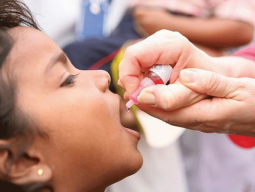
The Pakistan Tehreek-e-Insaf (PTI) led Khyber-Pakhtunkhwa (K-P) government had launched its flagship health insurance programme, Sehat Sahulat Card (also known as Sehat Insaf) in February 2017. Initially launched in four districts of Mardan, Malakand, Chitral and Kohat, it allowed underprivileged people — already registered for the Benazir Income Support Programme (BISP) to receive free medical treatment in private and public hospitals.
It was soon extended to 21 other districts of the province owing to the encouraging response.
It had followed the launch of a similar programme by the federal government across the country. Launched in December 2015, the Prime Minister’s Health Insurance Programme, was initially started in 26 districts across the country and was expected to be expanded to all districts.
The federal government had hoped to divide the cost of the premium with provincial governments at a ratio of 40-60 in favour of the federal government. Under the programme, patients were to receive inpatient health care services at hospitals registered on the government panel
For its Sehat Sahulat Card, which currently covers around 69 per cent of the provincial population, the provincial government pays Rs1,499 per card holder as an annual premium to the contracted insurance company. In turn, the insurance company pays hospitals the cost of treatment, capped at Rs500,000 for an individual per year, including open heart surgeries.
The federal government’s scheme was offered in a few districts of K-P where it overlapped with the provincial government’s Sehat Sahulat Card initiative.
“It was sort of duplication and we wanted the federal government to take full responsibility of two or three districts — which would be supported [to some extent] financially by the K-P government,” a senior health official with knowledge of the programme explained.
He added that most of the elements of the partnership had been almost finalised when all of a sudden, the programme was cancelled since the federal government wanted the card to carry a picture of the prime minister — given that the scheme was called Prime Minister’s Health Scheme.
“What happened was that the federal government wanted former premier Nawaz Sharif’ picture on the card and this was around the same time as Nawaz was sent home by the apex court in the Panama leaks case,” the official said as he requested anonymity since he was not entitled to speak to media.
The official added that later when even the Punjab bureaucracy was against it, the federal government wanted that the card’s carry former Punjab chief minister and Pakistan Muslim League-Nawaz (PML-N) president Shahbaz Sharif’s picture on the cards which further dragged the deliberations.
“This is the only reason why this idea could not materialise, otherwise it would have benefited millions of underprivileged,” the official said, adding, “We proposed that either Quaid-i-Azam’s picture or the Pakistani flag could be used (akin to the Watan card handed to internally displaced people) if they really wanted something to be printed on the cards, but it was not considered.”
The official further said that the federal government’s initiative would have actually helped the provincial government in extending health coverage to people from the recently merged tribal areas, adding that since the federal government had refused, the K-P government was put in a difficult position.
“Yes, you cannot leave them [residents of tribal areas] alone since the erstwhile tribal areas were now a part of K-P but at the same time how do you cover them,” the official asked, adding with the federal government’s intervention, provision of health care would have been standardised.
He also informed that the number of insurance companies would have increased creating an environment of competition which would have ultimately helped bring down the annual cost for the government.
Published in The Express Tribune, August 29th, 2018.




































COMMENTS
Comments are moderated and generally will be posted if they are on-topic and not abusive.
For more information, please see our Comments FAQ